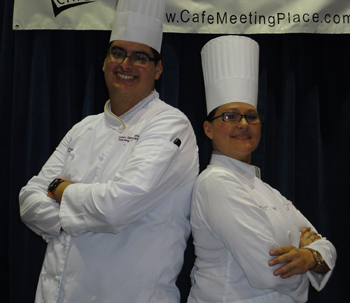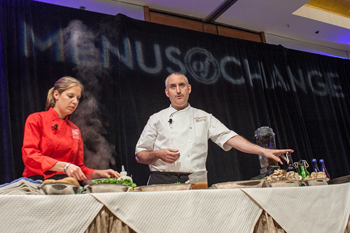Lesson Plan: AMI Releases Video Tour of Pork Plant Hosted by Temple Grandin, Ph.D.
Wednesday, 04 September 2013 14:59A new video from the American Meat Institute featuring a noted animal-welfare expert is part of the Glass Walls Project to increase transparency in the meat-and-poultry industry.
The American Meat Institute (AMI) recently released a video tour of a pork-slaughter plant hosted by leading animal-welfare expert Temple Grandin, Ph.D., professor of animal science at Colorado State University. The video is available on the institute’s dedicated animal-welfare website, www.AnimalHandling.org.
Also released with the video was a print companion brochure that may be downloaded. Single copies also are available upon request from the AMI. The pork-plant video tour and brochure augment the beef-plant video tour, also hosted by Grandin, which was released in August 2012. Since its release, the beef-plant video has been viewed nearly 50,000 times online and in countless classrooms and other settings.

 Simply preparing for your classes and delivering material is never sufficient. You have an obligation to yourself, your students and your institution to stay in touch with the industry you represent by building your personal, professional brand.
Simply preparing for your classes and delivering material is never sufficient. You have an obligation to yourself, your students and your institution to stay in touch with the industry you represent by building your personal, professional brand. At the 9th-annual CAFÉ Leadership Conference, four educators earned recognition and professional development for unleashing creativity in the culinary classroom.
At the 9th-annual CAFÉ Leadership Conference, four educators earned recognition and professional development for unleashing creativity in the culinary classroom. Two students’ winning dishes featuring Mexican avocado were enjoyed by attendees of CAFÉ’s 9th-annual Leadership Conference.
Two students’ winning dishes featuring Mexican avocado were enjoyed by attendees of CAFÉ’s 9th-annual Leadership Conference. At the inaugural Menus of Change™ summit co-presented by the CIA in June, experts in foodservice, health science and social change presented information on topics relevant to what today’s health- and environmentally conscious consumers expect from corporations, foodservice operators and business leaders.
At the inaugural Menus of Change™ summit co-presented by the CIA in June, experts in foodservice, health science and social change presented information on topics relevant to what today’s health- and environmentally conscious consumers expect from corporations, foodservice operators and business leaders.